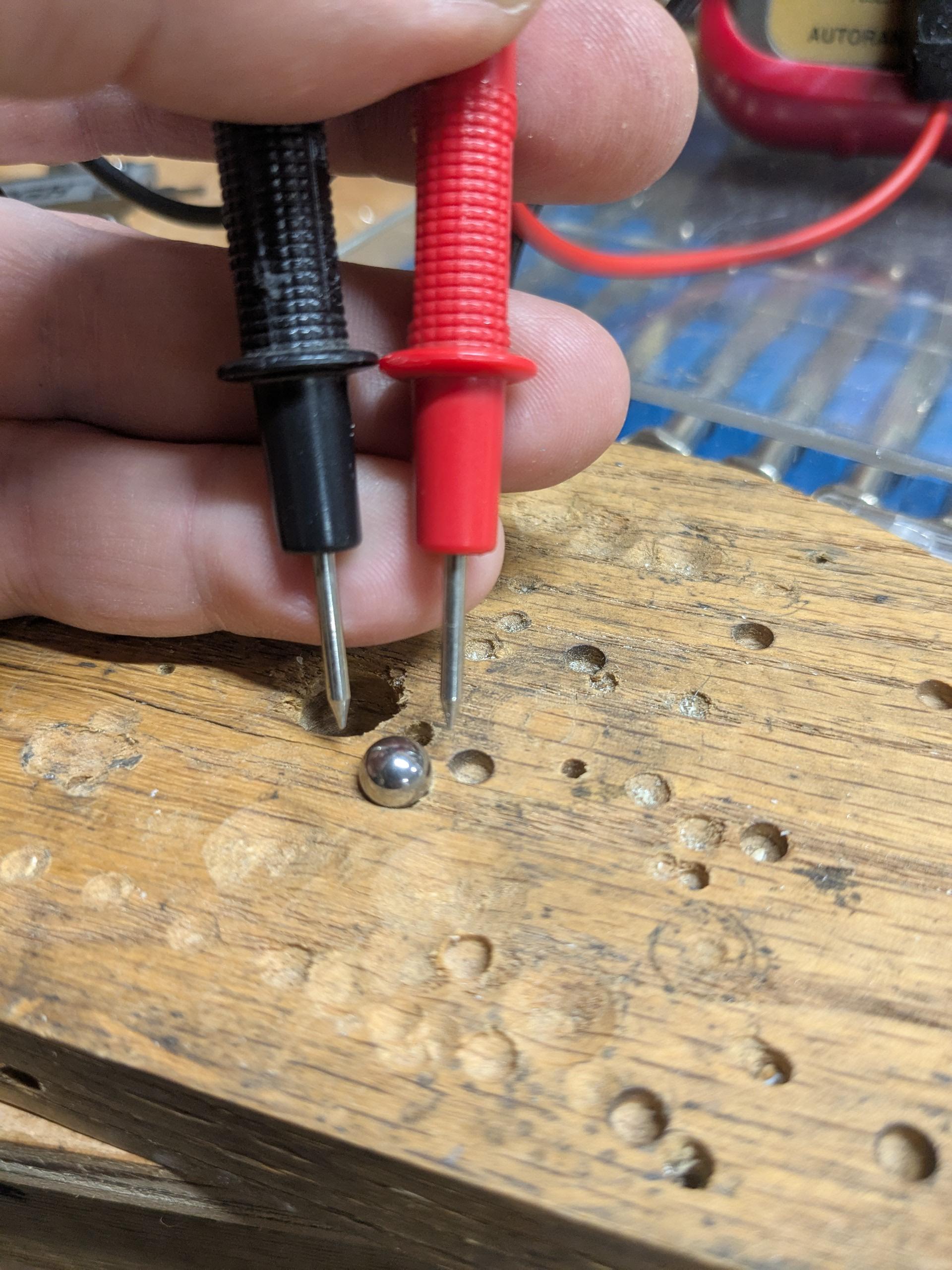Hive mind here's a weird problem.
-
Hive mind here's a weird problem. If I measure the resistance across what I believe is a carbon steel ball bearing, that I've scrubbed with steel wool and then washed with acetone, the resistance between the probe points is a rapidly fluctuating number between 30 and 800 ohms. If I do the same thing with a carbon steel file it's steady at about 0.5 ohms. Any guesses about why a ball bearing acts like this?

-
@smellsofbikes High alloy metal probably.
-
@MisterMaker I was wondering if this is actually higher resistance metal, like maybe it has a bunch of chromium in it.
-
 G gustavinobevilacqua@mastodon.cisti.org shared this topic on
G gustavinobevilacqua@mastodon.cisti.org shared this topic on
-
@smellsofbikes @MisterMaker Ball bearings usually have chromium in them, but like 1.5% — would that be enough to do that?
(52100 steel)
-
@mcdanlj @smellsofbikes @MisterMaker
I second the idea of a bad contact between probes and sphere.
Ideally spoon shaped probes must give a better contact. -
@smellsofbikes I couldn't let this rest and grabbed a fresh (new, uncleaned) bearing from my stash and tested it. Anything from less than 1 ohm to hundreds. Occasionally rested at a few ohms for a while.
I was totally expecting to come back and say "it must be those weird bearings you found" but I guess I can't!

-
@mcdanlj Yeah, same experience: I've tried multiple bearings. Weird, isn't it?
What's something weird we could do with a variable resistance source? Like, could we try to power LED's through a moving string of ball bearings? -
@smellsofbikes I suppose washing it in acid and nickel-plating it might give a more consistent experience, but I have other projects ahead of that.

-
@mcdanlj @smellsofbikes I had to give it a go too. Exact same result.
-
@ancientjames @mcdanlj Weird, huh? I don't expect things to behave like this.
-
@smellsofbikes @ancientjames Looked it up... 52100 chrome steel has resistance of 21.9 µΩcm so it seems like it can't just be that. Chromium itself is 125 nΩm (at 20 °C) so it's not that either.
Starts to feel like a semiconductor somewhere.
I wonder whether grinding a flat in a bearing would create a diode of some sort. Might depend on what metal is use for the probe?
I know nothing about this though. Just wild speculation!